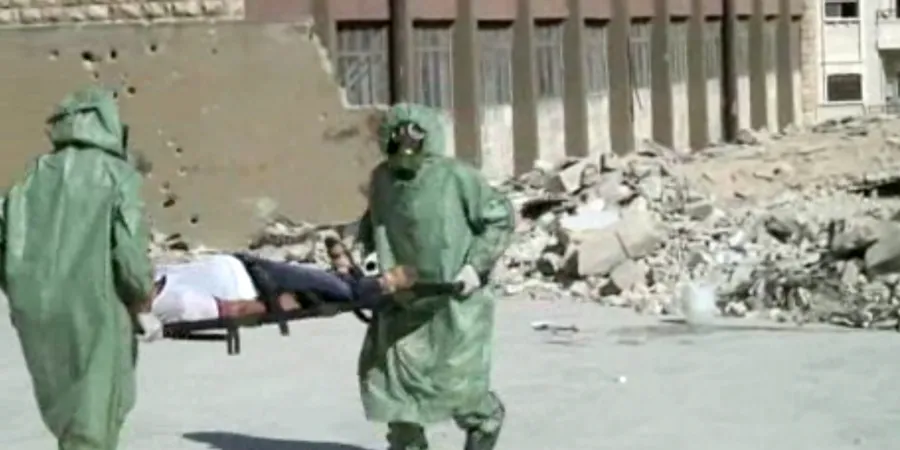Report: Syria Government 'Producing Chemical Weapons at Research Facilities'
According to a Western intelligence agency, Syria's government is continuing to make chemical weapons in violation of a 2013 deal to eliminate them
IsraelDefense
| 06/05/2017
A document says chemical and biological munitions are produced at three main sites near Damascus and Hama, reports the BBC. It alleges that both Iran and Russia, the government's allies, are aware.
The intelligence document obtained by the BBC says Syria's chemical weapons are manufactured at three sites – Masyaf, in Hama province, and at Dummar and Barzeh, both just outside Damascus. All three are branches of the Scientific Studies and Research Centre (SSRC), a government agency, it adds.
Despite monitoring of the sites by the Organization for the Prohibition of Chemical Weapons (OPCW), the document alleges that manufacturing and maintenance continue in closed sections.
It says the Masyaf and Barzeh facilities both specialize in installing chemical weapons on long-range missiles and artillery.
The OPCW mentioned Barzeh and Dummar – also known as Jamraya – in its latest official progress update on its work to eliminate Syria's chemical weapons program.
The watchdog says inspectors visited them between 26 February and 5 March and that it is still awaiting laboratory analysis of the samples that were taken.
The US imposed economic sanctions on 271 SSRC employees three weeks after the Khan Sheikhoun incident, accusing the agency of focusing on the development of non-conventional weapons and the means to deliver them.
It is promoted as a civilian research institute by the Assad government.
A source familiar with weapons inspection protocols says it is plausible that a government might only declare certain facilities on any given site to the OPCW and therefore only give inspectors access to those areas.
The intelligence document also accuses Syria of falsely declaring the work of one of its research branches as defensive – when it really continues to develop offensive capabilities.
[Source: BBC]
According to a Western intelligence agency, Syria's government is continuing to make chemical weapons in violation of a 2013 deal to eliminate them
A document says chemical and biological munitions are produced at three main sites near Damascus and Hama, reports the BBC. It alleges that both Iran and Russia, the government's allies, are aware.
The intelligence document obtained by the BBC says Syria's chemical weapons are manufactured at three sites – Masyaf, in Hama province, and at Dummar and Barzeh, both just outside Damascus. All three are branches of the Scientific Studies and Research Centre (SSRC), a government agency, it adds.
Despite monitoring of the sites by the Organization for the Prohibition of Chemical Weapons (OPCW), the document alleges that manufacturing and maintenance continue in closed sections.
It says the Masyaf and Barzeh facilities both specialize in installing chemical weapons on long-range missiles and artillery.
The OPCW mentioned Barzeh and Dummar – also known as Jamraya – in its latest official progress update on its work to eliminate Syria's chemical weapons program.
The watchdog says inspectors visited them between 26 February and 5 March and that it is still awaiting laboratory analysis of the samples that were taken.
The US imposed economic sanctions on 271 SSRC employees three weeks after the Khan Sheikhoun incident, accusing the agency of focusing on the development of non-conventional weapons and the means to deliver them.
It is promoted as a civilian research institute by the Assad government.
A source familiar with weapons inspection protocols says it is plausible that a government might only declare certain facilities on any given site to the OPCW and therefore only give inspectors access to those areas.
The intelligence document also accuses Syria of falsely declaring the work of one of its research branches as defensive – when it really continues to develop offensive capabilities.
[Source: BBC]



